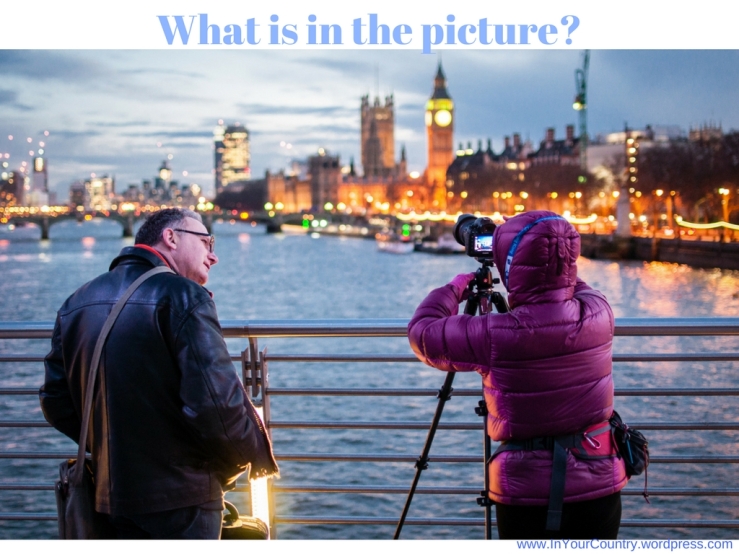Hi teachers! I recently posted a new list of conversation questions about Fall for your ESL / EFL classes on my new site. You can check them out here: ESL Airplane – Conversation Questions About Fall
Hope you like ’em!

Hi teachers! I recently posted a new list of conversation questions about Fall for your ESL / EFL classes on my new site. You can check them out here: ESL Airplane – Conversation Questions About Fall
Hope you like ’em!
I’ve created a couple of new conversation question worksheets that are perfect for summer: Questions about water activities, and Questions about summer. They are designed to be used with ESL students of all ages and language levels, and could be a great way to get students speaking in your summer programs. Enjoy!
 In case you’re planning a Halloween lesson for next week, I’d like to share a list of conversation questions to get your students chatting about the holiday. The questions are mainly in simple present and simple past tenses, so they can be used with high-beginner classes and up.
In case you’re planning a Halloween lesson for next week, I’d like to share a list of conversation questions to get your students chatting about the holiday. The questions are mainly in simple present and simple past tenses, so they can be used with high-beginner classes and up.
I’ve posted the questions, along with a printable handout, at my new site, ESL Airplane. You can find them right here: Conversation Questions About Halloween
Hi Teachers!
I know it’s been a long time since I’ve posted anything in this blog. I took a break for a while, but I’m back. Well, kind of, anyway. I’ve started a brand new blog called ESL Airplane, and I’m super-excited about it!
It’s going to include everything from In Your Country, plus new sections for quirky news stories, conversation questions and more. I’m gradually going to be moving the content from this site over there and adding lots of new material, as well. It’s still new, and I still have a lot of work to do and things to learn about blogging, but it’s open and ready for visitors.
You should stop by! 🙂
Click right here to check it out: www.ESLairplane.com
There is a table. There are two hands. There is some coffee. There are two cups. There are two cups of coffee. There are two bracelets. There is pink nail polish. There aren’t any faces…
Early on when teaching beginners, there usually comes a point when my students have enough vocabulary to make simple sentences with the verb “to be,” but they can’t yet say much else. They can describe what they see in front of them using “there is” and “there are.” They can form plural nouns and use the words “some,” “a lot of” and maybe “any.” They have learned to use numbers, and they might even know a bit about adjective order in English. They still need more practice with “to be,” though, before we move on to other verbs.
At that point, I like to bring out the pictures. I show a series of simple pictures to my students, and we work together to describe what we see. I try to look for pictures with a mix of images that they already know the words for, as well as some words that they haven’t learned yet.
Here are some examples of the types of images that I might start with:





It is possible to use the idea above as a whole-class warmup or end-of-class activity for a bigger group. However, you can definitely make changes if you’d like to let your students work in small groups or pairs.
Have you used any of these ideas with your students? How else have you used pictures to teach beginners? I’d love to hear from you, so please take a moment to leave your comments in the box!
I love teaching complete beginners to speak English! For me, it fees like starting a project from scratch and then watching it develop.
I like teaching the basics and then seeing students connect the dots in their minds as they learn new things. (For example, if they learn “I don’t understand,” on day 1, they often have a lightbulb moment when I teach them to form negative sentences three weeks later.)
I like the feeling that if I train them well from the beginning, I can help them avoid the common basic mistakes that more advanced students make all the time (“go TO,” not “go IN!).
I love when a few weeks in, the occasional beginner student looks at me all bright-eyed, and says something like, “Wow! I understand everything we learn!” or “Wow! English is easy!” or “I can’t believe I like English!” And then they share a horror story about a nightmare teacher who told them they were bad with languages and would never learn English, or about getting stuck in a class where they didn’t understand anything. Beginners are really appreciative, and when I’m doing my job right, I know it.
Luckily for me, none of the other teachers at my school seem to share my enthusiasm for teaching low-level learners, so when they come along, I’m usually the one asked to teach them. A lot of teachers who I’ve spoken to seem to think that it’s harder to teach beginners than to teach intermediate and advanced students, but for me it’s the opposite. (Advanced students ask hard questions!)
This month, my goal is to put together of series of posts to help other teachers who need help with their beginner classes. If you’re one of those people, I’d love to hear from you:
-What questions do you have about teaching beginners?
-What are some problems you’ve had in the past?
-Do you have any beginner horror stories?
Or if you’re like me, and you do love beginner classes:
-What do you like about teaching beginners?
-What tips do you have for anyone who is struggling?
Please take a moment to answer a question or two in the Comment section. 🙂

Happy Tuesday, everyone!
I’m not much of a morning person, so lately I’ve been thinking a lot about setting up classroom routines to help cut down on prep-time, and make mornings run more smoothly. I find that teaching is less stressful when I don’t have to worry about what I’m going to say just after I greet my students.
One idea that I’ve been thinking about is starting with a class segment that I’ll call Expressions of the Day. I’m simply going to start each class by introducing a couple of useful English expressions, explain how they’re used, and have students come up with a few example sentences. Every day, I’ll challenge students to try to use one of their new expressions at some point during the class.
I plan to choose phrases that either (a) I personally use in everyday life, or (b) could be helpful in understanding media and cultural references. I’ll to try to avoid cute but outdated idioms like, “raining cats and dogs.” Students seem to like that one, but to be honest, I don’t know any native speakers who wake up, look out the window, sigh and say, “It’s raining cats and dogs again.” Most people I know just say, “Ugh. Rain.”
And that’s it! Simple but practical, I hope.
If you’d like to try this out along with me, I’ve created this little graphic organizer, which you can view and print right here: Expression Organizer
If anyone is interested, one of these days I’ll post an expression checklist that you can keep on hand so that you never run out of ideas.
I’d love to hear your thoughts. If you have a moment, please post ’em in the comment box below.
Here’s a creative activity that should get students of all ages thinking outside of the box.
A while ago, I posted The Balloon Chair Prompt, in which students sell an unusual product to their classmates. Today I put a similar prompt onto a handful of different images so that you can use it with groups more easily.
The new prompt reads: You work in a shop that sells unusual, expensive items. A customer walks in and asks you about the object in the photo. Sell it to him/her.
Take a look, and then scroll down to the bottom of the page for some lesson plan ideas.



Would you use it again? Do you have any other ideas on how to use these prompts? I’ll be happy if you let me know! Take a moment and leave your ideas and suggestions in the comment box below. Thanks for reading.
Hi there!
These past few months have been pretty busy, but I think I’m back for real, this time. I’ve got a new table in my new apartment, and it’s set up near a sunshiny window overlooking my city street, and there are birds chirping in the background and everything. So… I’m totally motivated to sit down and get back to writing!
This week I’ve been working on coming up for lots of new ideas for speaking prompts, classroom activities and more. If that’s what you’re looking for, check back soon. (And feel free to say hello in the comment section to let me know you’re reading and keep me on my toes.) 🙂